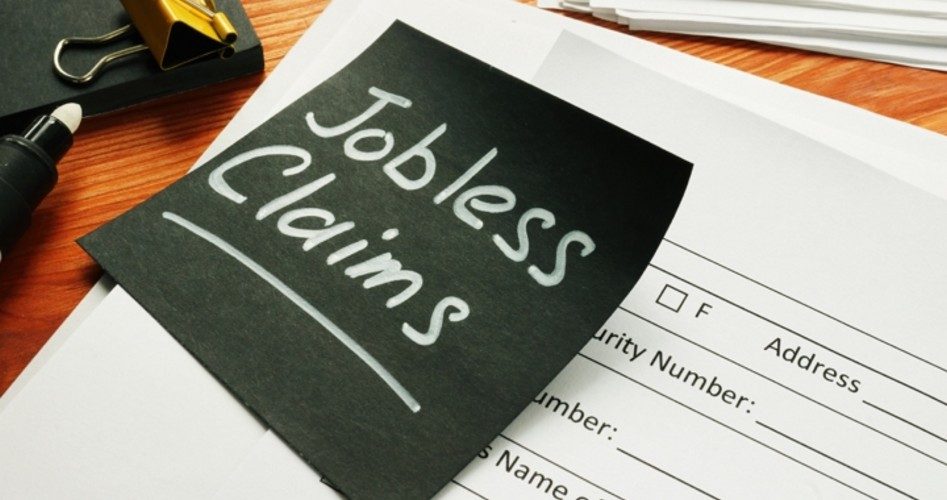
Unemployment claims filed during the week ending June 27 dipped 3.7 percent from the previous week, but 13.2 percent of Americans were still unemployed as of June 20, the Department of Labor reported on Thursday.
The number of claims filed was 1.427 million, down 55,000 from the previous week’s 1.482 million.
Though the recovering economy created 5 million jobs in June, another report from the Labor Department showed, almost 20 million Americans remained unemployed.
Since March 1, almost 50 million Americans have applied for unemployment benefits.
Some States Not Improving
If any good news is coming with the weekly figures, it’s that the number of Americans filing claims has steadily decreased since the high 6.867 million the week ending March 28.
By April’s end, the number had dropped 53.7 percent of 3.176 million. And they’ve dropped another 55 percent since then.
The total decline since the record high 13 weeks ago is 79.2 percent. At that pace, employment won’t return to pre-pandemic levels until mid-September, well into election season. Knocking off another 1.130 million claims would bring that figure to 297,000.
Total claims filed since March 1, the department reported, is 49.7 million.
March 7 — 211
March 14 — 282
March 21 — 3,307
March 28 — 6,867
April 4 — 6,615
April 11 — 5,237
April 18 — 4,442
April 25 — 3,846
May 2 — 3,176
May 9 — 2,687
May 16 — 2,446
May 23 — 2,126
May 30 — 1,897
June 6 — 1,566
June 13 — 1,540
June 20 — 1,482
June 27 — 1,427
Total: 49.15 million
As claims filed in state go, the largest were these:
California — 43,070
Maryland — 9,099
Florida — 7,535
New Jersey — 6,589
Indiana — 5,314
The largest decreases were these:
Oklahoma — 26,166,
Kentucky —12,804
Oregon — 8,371
Georgia — 6,272
New York — 6,119.
Unemployment Rates
The number of unemployed as of June 20 is 19.3 million, or 13.2 percent of the nation’s 145.7 million-strong workforce, the department reported.
Unemployment rates as of June 13 in some states are still way too high. Puerto Rico’s rates shot up 11.6 percent from 20.6 to 23, while Hawaii’ jumped 16.4 percent from 18.3 to 21.3. The rate in the Virgin Islands jumped as well, while the rest of the s tates in the Top 10 for unemployment declined.
Nevada enjoyed the largest dip, from 22.6 to 21.4
State June 13 / June 6
Puerto Rico — 23 / 20.6
Nevada — 21.4 / 22.6
Hawaii — 21.3 / 18.3
The Virgin Islands — 17.8 / 16.2
New York — 17.5 / 17.8
California — 16 / 17.3
Louisiana — 15.9 / 16.9
Massachusetts — 15.9 / 16.2
Georgia — 15.3 / **
Connecticut — 15.2 /15.8
** Not on list
What’s It Mean For Trump?
With the hate-Trump, pro-Biden media crowing about the latest polls that show the Democrat presidential candidate ahead, particularly in battleground states, the question is what the data actually mean: Have they given Biden a boost?
The latest Real Clear Politics Average gives Biden an 8.8-point lead, 49.3 to 40.5 over Trump and an Electoral College victory of 222 to 125. Biden’s lead has declined in the RCP from 9.2 points earlier this week.
Biden also leads in these battleground states: Arizona (47.5-44), Florida (49-42.6), North Carolina (47.2-44.2), Pennsylvania (48.7-41.7), and Wisconsin (48.5-42).
Yet those numbers are not a surprise. Biden has bested Trump in every poll but one since March 27 last year.
In other words, little has changed either because of the Chinese Virus or the insane riots that have convulsed the country since the death of George Floyd in Minneapolis, Minnesota on May 25.
Trump was behind a year ago all the way through the March, when the economy was roaring along at 3.5 percent unemployment and the Asiatic pathogen struck and public officials panicked and shut down the economy in a Gadarene rush to drive it into the ground.
And here’s something else that hasn’t changed: Biden’s obvious cognitive deficit and likely decline into dementia. Or at least that’s what many voters believe.
Two recently released polls, as The New American reported on Tuesday, show that many voters — including 20 percent of the Democrats polled — believe Biden’s elevator can’t reach the top floor.
The obvious worry among Democrats: Biden can’t survive a campaign against Trump much less the rigors of the presidency.
Clinton Was Ahead, Too
Unemployment claims are bound to continue declining as more and more Americans head back to work. If they continue dropping at the rate they are now, again, within three months they will have returned to pre-pandemic levels.
If the polls that have shown Biden ahead for more than a year, even during an economic boom, are accurate, then the unemployment rate going forward will not matter in the race for the presidency. Biden will continue leading until Election Day, as did Hillary Clinton in 2016.
If the polls are overestimating Biden’s strength and popularity, then he might not be the sure winner on November 3 that the media think he is.
Either way, Clinton found out the hard way that polling data might not predict the winner of an election, particular when the winner is not determined by popular vote.
Photo: designer491/iStock/Getty Images Plus
R. Cort Kirkwood is a longtime contributor to The New American and a former newspaper editor.



